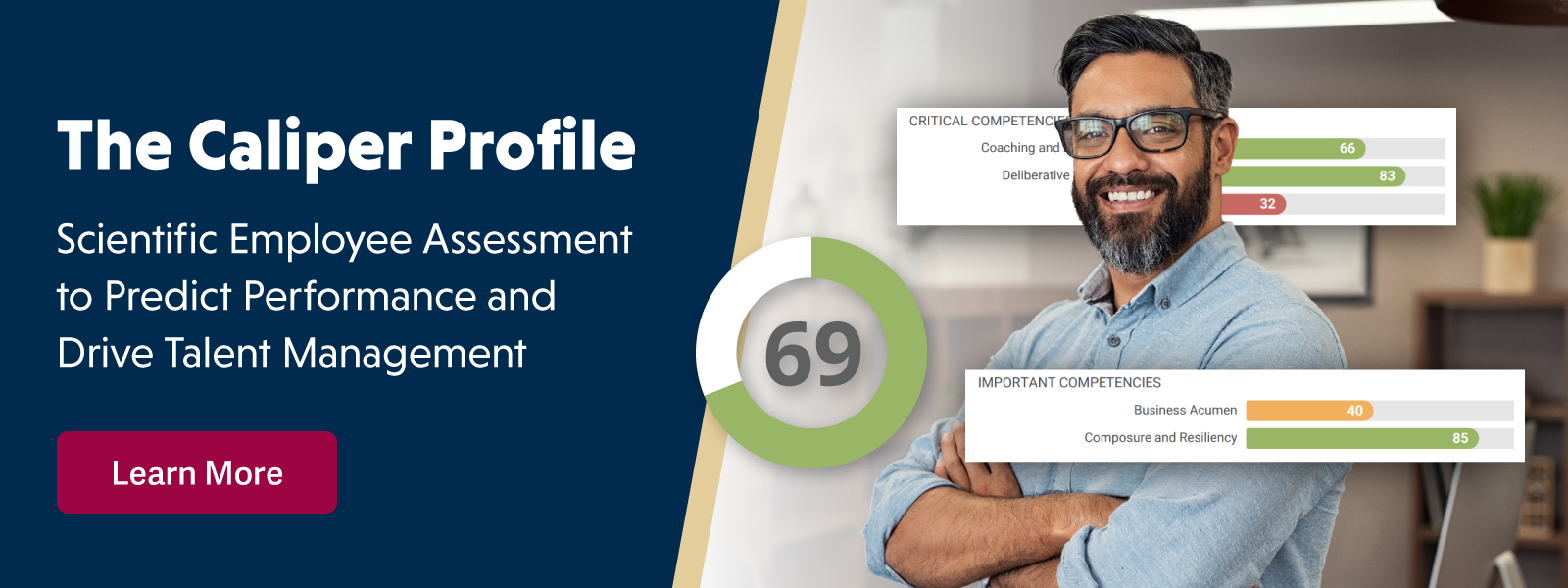This article on succession planning and leadership development was originally published in April 2019. All relevant statistics and copy have been updated as of November 2020.
If given a dose of truth serum, many businesses would admit to not preparing sufficiently for the future. Sure, a CEO may consider the organization’s legacy and what that looks like, but there is frequently no clarity around who will bring that vision to life.
And since that truth serum hasn’t worn off yet, you have no choice but to admit it: As a business owner, it’s discomforting to consider that one day, your brainchild will be in different hands. This unease is only amplified in family businesses that do not have a logical successor.
High-potential #employees actually increase the level of #productivity and #engagement of those around them, sometimes by 15%. Find out how @CaliperCorp can assist you in your productivity and engagement goals: Share on XIt can be equally dizzying to consider the impact on your organization if a senior leader left suddenly. You start asking yourself:
- How do I go about choosing a suitable replacement?
- Do I have the leadership bench strength in-house to fill key roles in the future?
- What is the cost and process of going outside my organization for help?
- Will I have to compromise on leadership quality to fill certain positions?
Business owners have enough to keep them up at night, between the capriciousness of the economy and competitors cutting into profit margins. The common thread between these external threats is that there is little one can do to stop these wheels from turning. Thus, it becomes even more essential to focus internally and give yourself and your business that long, hard look in the mirror so you can plan out your preparation for the future.
Bonus Material: A New 3-Part Series: How to Build Self-Management In Your Employees
How Do You Begin?
You may think the planning process is as simple as highlighting your strongest performers and top employees and then promoting them into positions of leadership, but succession planning is much more robust than that. While performance is a good indicator of the level of quality and value an employee provides the organization, performance in and of itself is not always the best trait to base leadership on.
Many have found that employees who demonstrate a high level of potential are the better choices for leadership roles.
How so?
Studies have found that high-potential employees actually increase the level of productivity and engagement of those around them — sometimes up to as much as 15%. High-potential employees stand out above the crowd with the value they add to your organization. These employees embody the company culture, which creates a positive work environment that fosters creativity and collaboration. High-potential employees are ones who work well under pressure and can manage their own time and responsibilities in a strategic and meaningful way.
Simply put, high-potential employees are ripe for leadership roles and should be taken into consideration when you start your succession planning.
Bonus Material: How to Build Self-Management In Your Employees: Part 2
How to Identify High-Potential Employees
The first step is moving away from basing your viewpoint on performance appraisals. While performance reviews will uncover the strengths and weaknesses of an employee’s quality of work, they are often not helpful in providing insight into the behaviors and characteristics of future leaders. Experts say that when it comes to high-potential people, there are a few key markers to look for:
- Ability — Leadership roles in organizations require high levels of strategic thinking, the ability to adapt in the face of crises, and an entrepreneurial mindset that allows you to see the bigger picture.
- Social Skills — Leaders not only need to manage themselves but also those around them. High-potential employees are ones who can handle increased pressure, maintain a high level of respect for themselves and others, and handle feedback and criticism in a constructive way.
- Drive — High-potential employees are ones that are driven to be better. They aim to provide the highest quality of work and are motivated to take on extra responsibilities.
Bonus Material: Self-Management Examples to Set For Your Employees: Part 3
Identifying these traits in your current employees doesn’t need to be tricky; using personality assessments, coaching, and development, high-potential employees can be easily found. And this is where a trusted talent-management firm comes into play. Caliper assists with succession planning and employee assessment through our Certification program. With support in our developmental guides and coaching and development classes, HR professionals can equip themselves with the tools they need to differentiate their high-performers from those with high-potential.
Check out what 3 indicators @CaliperCorp says to look for when it comes to high-potential people: Share on XLeveraging personality data that objectively identify one’s potential, Caliper can show you where your top talent lies. Through a scientifically validated process with decades of research to back it up, Caliper helps companies find those who possess the key differentiating ingredient to leadership: learning agility. To learn more about how Caliper can assist with developing leaders within your organization, or jumpstart your succession planning, reach out to one of our experts today to schedule a demo.


